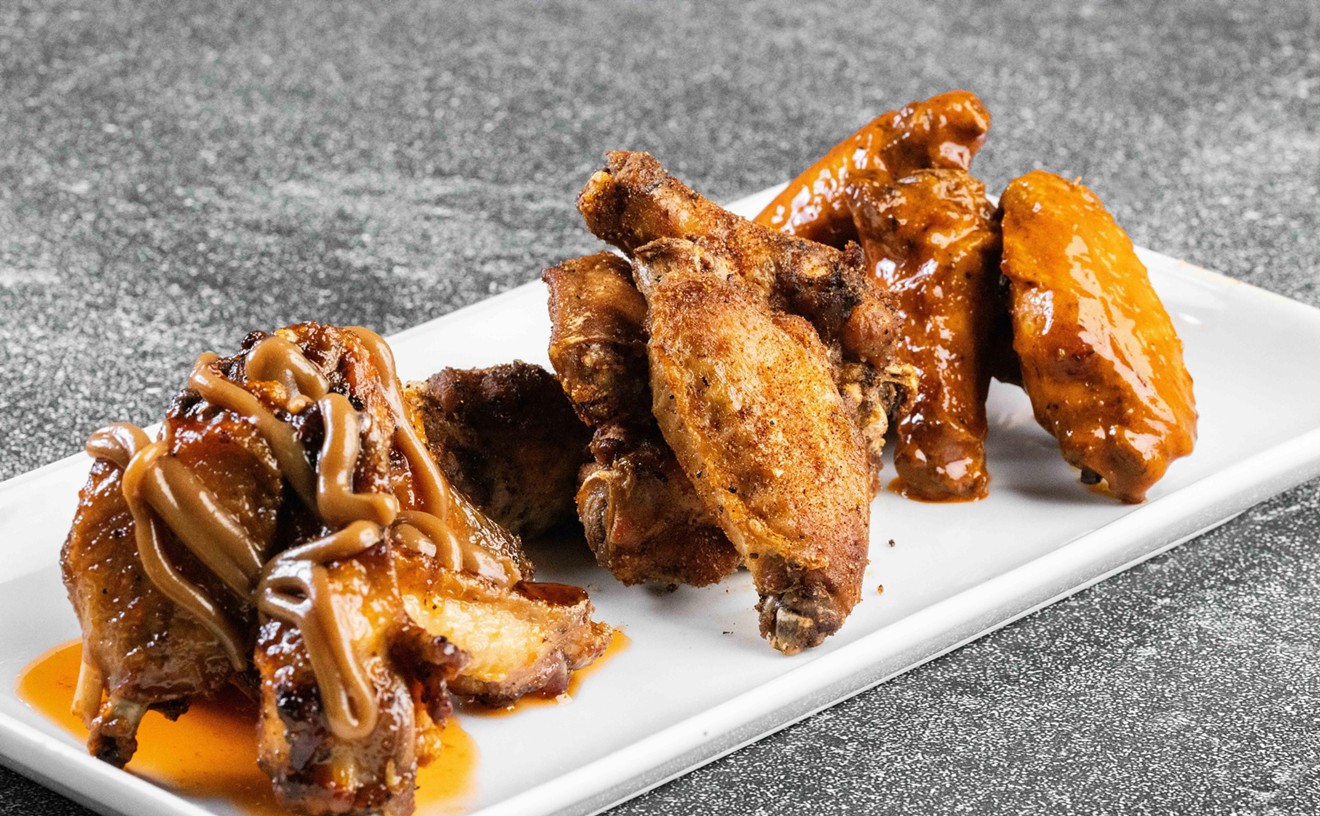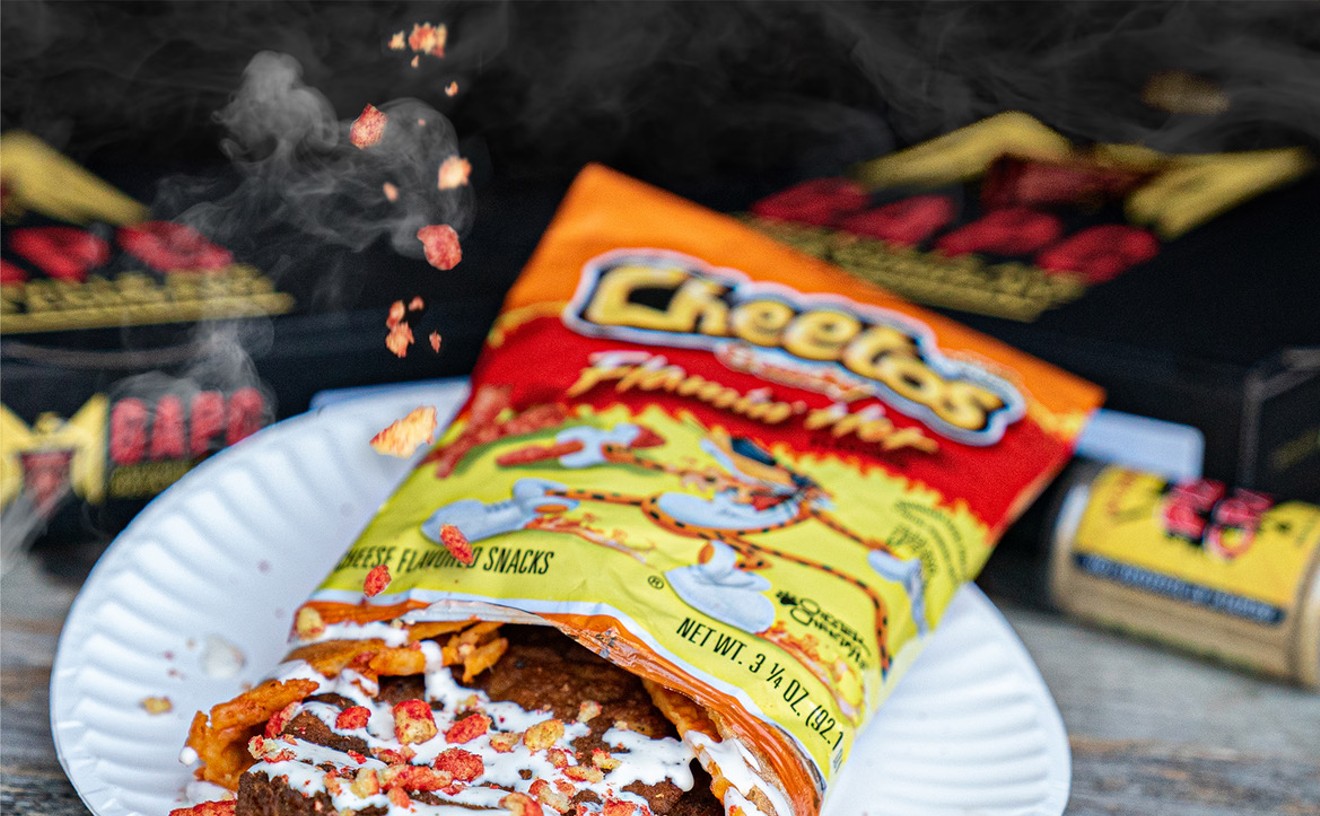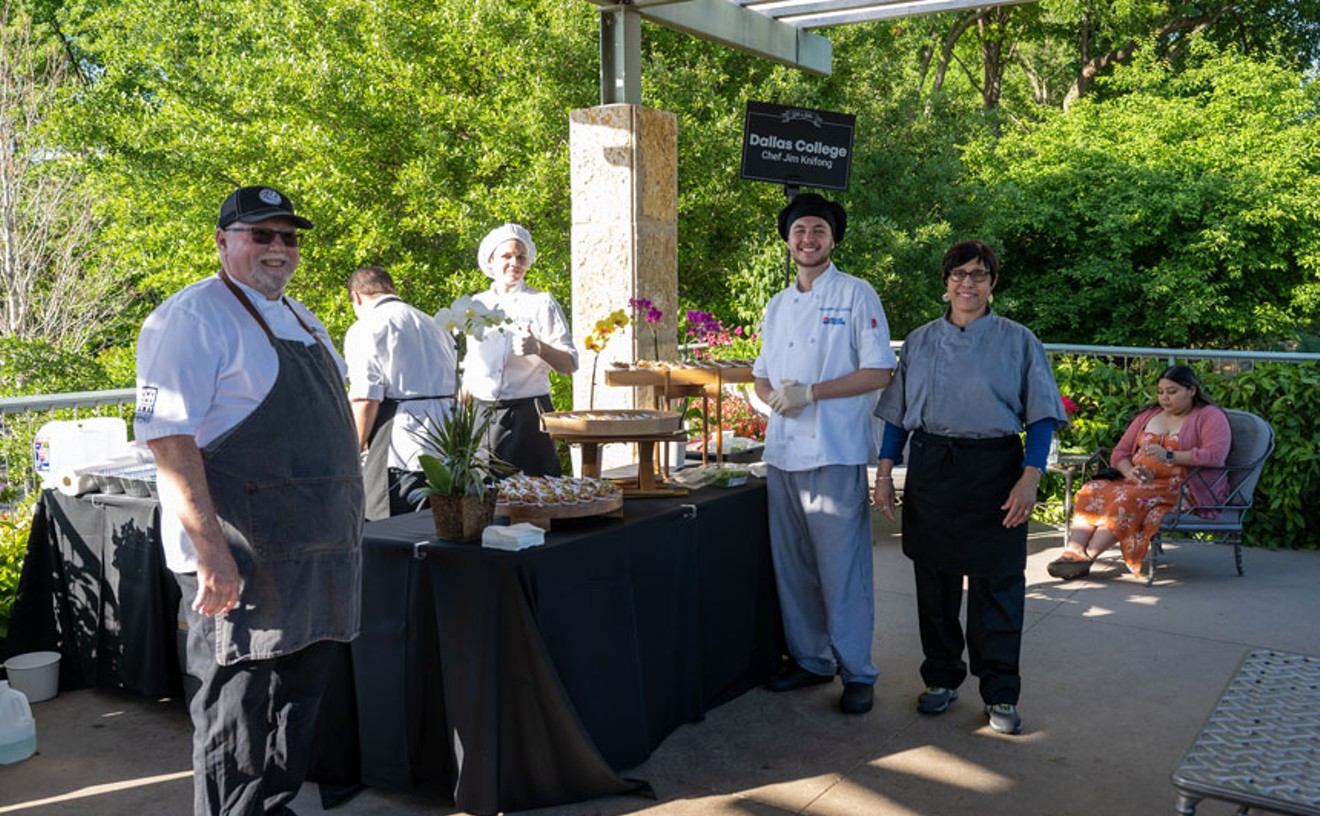Dallas has plenty of Italian-American restaurants. The problem is very few of them are any good. While Lucia, Nonna and other regional Italian restaurants pay homage to the Old World with brilliant dishes featuring little fishes, hand-rolled pastas and wild game, Dallas has a dearth of decent spaghetti and meatballs.
The Campisis have amassed many locations in and around the city, but they've done it more by cashing in on hoary rumors of mob connections than with a stellar calamari fritti. Patrizio is packed with the Highland Park glitterati on weekends, but it's not because of its lifeless Caesar salad. Pietro's and Bellini's ride more on their shtick than the quality of their food, too, and the green neon of countless other ristoranti does little to instill confidence in the cooking that lurks inside. Until two months ago, the best Italian-American food to be had in Dallas, at least in terms of consistency, was likely served at Maggiano's.
That's a shame, because Italian-American food might be the most delicious bastardization of a world cuisine American cooks have ever mustered. Spaghetti and meatballs, lasagna slices the size of car batteries, salads drenched in oil and red wine vinegar and endless baskets of garlic bread — these are the comfort foods of millions of Americans.
When Italian immigrants started flocking to New York City, they may have left the subtleties of Tuscan, Sicilian and Roman cuisine behind — rustic Old World breads became yeast-driven, bland loaves, and pomodoro sauce evolved into a meat laden "gravy" — but they brought with them a love of food and eating. Using their New World bounty, they built their own distinct and iconic food culture.
This is the spirit Julian Barsotti attempts to invoke with Carbone's, his new restaurant and take-out counter in southern Highland Park. Barsotti's first offering, Nonna, opened in 2006 in Oak Lawn and focuses on regional Italian cooking, but with Carbone's, Barsotti wanted to re-create something closer to what Italian immigrants might have encountered when they came to the States.
This is the reason my waiter gives for favoring domestic over Italian wines, along with La Quercia prosciutto from Iowa, Anson Mills polenta from South Carolina and locally grown tomatoes, among other ingredients. It's a nice sentiment, but there is no way any fresh-off-the-boat Italian-American ate a sandwich as good as what the chalkboard menu calls an Italian combo, a mix of hot coppa, mortadella and soppressata cold cuts stuffed into the tough, chewy bread. Shredded lettuce, thinly shaved onions and a tart vinaigrette round out a very compelling hoagie. Other sandwiches are just as good, and they ought to be, since they all cost $10-11.
Forget that tough, dry, breaded chicken cutlet you had at your old favorite Italian-American restaurant. Barsotti's is pounded thin, but not too thin, and cooked perfectly, with a moist center and a brilliantly golden crust. Slathered in a tomato sauce as scarlet as sin and stuffed into another one of those crusty loaves, this chicken Parm sandwich will fast become your new lunchtime friend.
Business is brisk during the day, with a line of Highland Park moms picking up large paper bags stuffed with butcher paper-wrapped sandwiches and other deli snacks. At night, though, a hostess guides customers to sparsely decorated tables, with place mats of butcher paper. Specials dot the menu with Barsotti's freshly rolled pasta, and Carbone's turns into a full-service restaurant.
The space doesn't feel very Italian, however. Draped head to toe in a whitewash of fresh cream, the dining room is as bright as a sunny day at the beach. Un-oiled soapstone counters frame the deli cases in a frosty, slate gray, and shelves, sparsely stocked with pasta and canned tomatoes, look as if they could just as easily display expensive shoes and purses. It's hard to find the romance here, but you don't care — a simple plate of prosciutto and melon just landed on your table.
It's a clichéd plate that has undoubtedly disappointed, and perhaps confused, many diners. What's a dry piece of prosciutto doing wrapped around a vapid piece of melon, anyway? But this cantaloupe is the color of a Creamsicle and tastes as sweet as misbehavior. The ham curls into sumptuous folds when gathered on your fork before it unfurls again, now in your mouth, melting into buttery flavors of fat, pork and salt. At once cool and warm, savory and sweet, a plate like this might inspire you to try something similar at home with ingredients from your local grocery store. Don't bother.
Ingredient sourcing is everything when cooking dishes with few ingredients. A Caprese salad comprising tomatoes, mozzarella, basil and oil is a simple preparation. But if you want to make one as good as Barsotti's, you'll have to find sunny golden, purple Cherokee and heirloom tomatoes the color of blood. You'll have to shill out a little extra for fruity olive oil the color of dry grass. Fnding the right ingredients is hard, and that's exactly where Barsotti excels.
Even in more complicated preparations, great ingredients shine through. They just take more care to prepare. Take the house-made sausage links that grace a perfect polenta puree alongside a rabbit loin. It's not enough to stuff a hog casing with high-quality pig that's so lightly seasoned the flavor of the heritage swine shines. It has to be cooked gently to retain its integrity and a subtle, pink hue. Take one bite and you'll question why you've grilled your sausages into oblivion at home.
Other mainstays are no less impressive. A vegetarian lasagna pairs tomatoes, spinach and cheese tucked cozily between thin and tender sheets of pasta. Fettuccine is just as delicate, though Barsotti should not call the sauce that dresses it "gravy." The blend of pork and other meats the kitchen saves from the scraps of other projects is cooked down into more of a ragu. The pasta is dressed more in the fat of animals than a long-stewed tomato puree. Semantics aside, the dish eats beautifully. It's satisfying, but not heavy.
Almost all of the hand-rolled pasta here demonstrates why Barsotti is known for his noodles, and a tortelloni special would look right at home on the more refined menu back at Nonna. The large parcels filled with a soft corn puree played nicely with a rich butter sauce tinged with sage and chewy chunks of pancetta. A special menu offered every week for Sunday supper feels especially "Nonnarific."
The only dish in which the fresh pasta doesn't work is the spaghettini and meatballs. The thin noodles don't stand up to the heavy sauce and end up gluey. Dried pasta, the kind that's cooked at most Italian-American restaurants, would work much better here.
You're not at most Italian-American restaurants, however. That's evident with every dish that graces your table. Even more so when delicate cannoli seasoned with cinnamon marks the close of your meal. The dessert arrives wrapped in an envelope of paper and sealed with a butcher twine bow. A lemon semifreddo is even better, if you happen to like subtly sweet desserts that taste like a summer vacation.
Compare these desserts with the soggy tiramisu topped with chalky chocolate powder you're used to, and suddenly what's been working in Dallas in terms of red-sauce Italian cooking won't work so well anymore. There's a new Eye-talian spot in town, and it doesn't depend on its family name, its history or familiarity to win its customers. It relies on good food.










